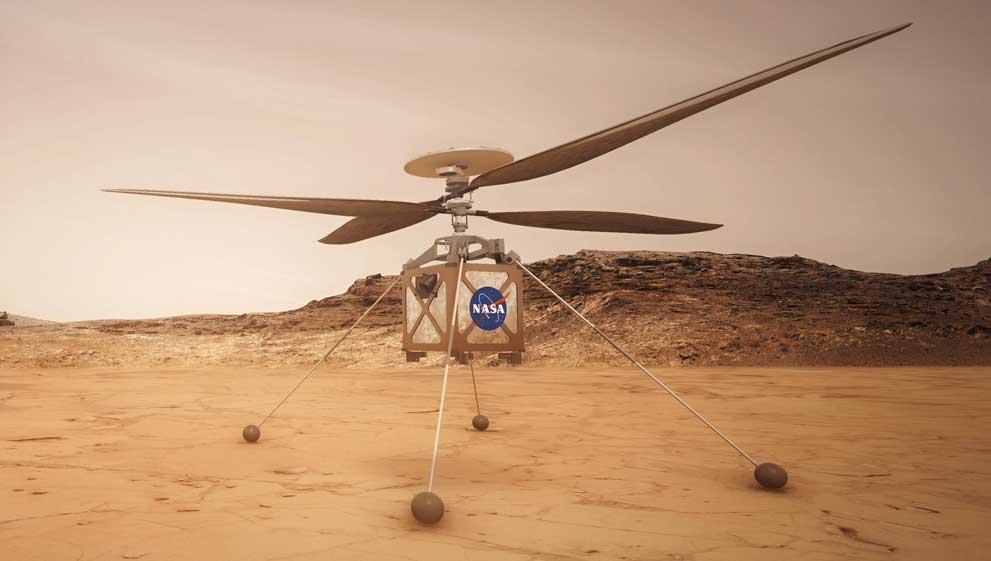The launch period of NASA’s Mars 2020 perseverance rover is arriving (as of Jan 2021), and the final preparations for the spacecraft continue at the Kennedy Space Center in Florida. Over the past week, the assembly, test and launch operations team finished several important milestones including, fuelling the descent stage (otherwise known as the sky crane) and attaching the Ingenuity Mars Helicopter, which will be the very first aircraft in history to attempt a power-controlled flight on another planet. The decent to the planet surface will be slowed via 884 pounds of hydrazine monopropellant which will be pressure fed through 120 feet of Stainless Steel and titanium tubing, in the 8 engines onboard. This will have the effect of slowing the craft from 180mph to 1.7 mph by the time it’s roughly 66 feet above the surface.
"The Wright Brothers demonstrated that powered flight in Earth's atmosphere was entirely achievable by using an experimental aircraft," said Håvard Grip, Ingenuity’s chief pilot at NASA's Jet Propulsion Laboratory in Southern California. "With Ingenuity, we're trying to do the same for Mars."
Ingenuity is what is known as a technology demonstration, a project that has the goal of testing a new capability for the very first time, with a very limited scope.
Ingenuity features 4 specially made carbon-fiber blades, sorted into two rotors that rotate in opposite directions at around 2,400 rpm, several times quicker than any passenger helicopter on Earth. Ingenuity also features innovative solar cells, batteries, and a variety of other components. Furthermore, Ingenuity doesn't carry any science instruments and is a separate experiment from the Mars 2020 Perseverance rover. However The helicopter could receive an electrical charge from the Mars rover. Prior to being deployed onto the surface of the Jezero Crater, the Mars Helicopter will rely on the rover for energy. Afterward, it will generate its own electrical power through a solar panel located above its twin counter-rotating propellers.The helicopter will generate its own electrical power through the use of a solar panel located above its rotating propellers.
Ingenuity is intended to demonstrate the technologies required for flying in the Mars atmosphere. If successful, these technologies could pave the way for a variety of other advanced robotic flying vehicles that could be included in future human and robotic missions to Mars.
"The Ingenuity team has done everything to test the helicopter on Earth, and we are looking forward to flying our experiment in the real environment at Mars," said MiMi Aung, Ingenuity’s project manager at JPL. "We'll be learning all along the way, and it will be the ultimate reward for our team to be able to add another dimension to the way we explore other worlds in the future."
in the future, no doubt, Stainless Steel wil play a big part of life on Mars (especially as it can now be used in 3D printing). It's supremely strong, durable and resistant to impact... take for example our Stainless Steel Drinking Fountains... perfect for any future Mars settlement!
Image: Author NASA/JPL-Caltech (This file is in the public domain)
